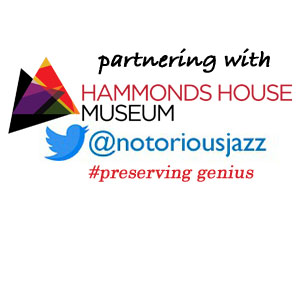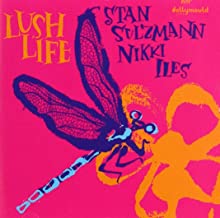
Daily Dose Of Jazz…
Stanley Ernest Sulzmann was born November 30, 1948 in London, England and began on saxophone at age 13, playing in Bill Ashton’s London Youth Jazz Orchestra, later the National Youth Jazz Orchestra. He studied at the Royal Academy of Music from 1969-1972.
In the 1970s he played with the Clarke-Boland Big Band, Mike Gibbs, John Taylor, Kenny Wheeler, Volker Kriegel, Eberhard Weber, Zbigniew Seifert, Phil Woods, Clark Terry, and Gordon Beck. The 1980s saw him working with Gil Evans, Paul McCartney, the European Jazz Ensemble, the James Last Orchestra, the Hilversum Radio Orchestra, the NDR Big Band, and the London Jazz Orchestra.
Collaborations in the 1990s include with Allan Botschinsky, David Murray, Paul Clarvis, and Bruno Castellucci. Television audiences around the world have heard him as the saxophone soloist in The Belgian Detective, the theme music to ITV’s Poirot, composed by Christopher Gunning.
Saxophonist Stan Sulzmann has held teaching positions at the Guildhall School of Music, the Royal Academy of Music, and Trinity College of Music, and continues to teach, perform and record.
More Posts: history,instrumental,jazz,music,saxophone
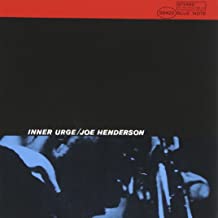
Requisites
Inner Urge ~ Joe Henderson | By Eddie Carter
Superb artistry is the name of the game whenever one listens to the music of Joe Henderson. A proficiently skilled bandleader, composer, and tenor saxophonist who made some of his most important jazz contributions as a leader and sideman recording for Blue Note from 1963 to 1968. The subject of this morning’s discussion is his 1965 album, Inner Urge (BLP 4189/BST 84189). Here, he leads an outstanding quartet session with McCoy Tyner on piano, Bob Cranshaw on bass, and Elvin Jones on drums. My copy used in this report is the 2019 Music Matters Jazz SRX Stereo reissue (MMBST-84189).
The album opens with Inner Urge, a swiftly paced composition that cooks from the first notes of the melody. The walloping tones of Cranshaw’s bass start the soloing with an impressive presentation. The leader charges into the next reading enthusiastically. Tyner takes no prisoners as he slices through the third solo vigorously. Jones shows off his musical gifts with a breathless dash, then Henderson adds a few more soulful explorations preceding the song’s climax.
Isotope is a lightly swinging blues by the saxophonist paying a compliment to pianist Thelonious Monk and the humor in his music. The quartet begins with a distinctive angularity as Joe leads them on the theme. Henderson’s opening solo is excitingly direct and incisive. McCoy illustrates his ability to swing with lots of energy next, then Elvin puts together a remarkable performance for the finale, exchanging sprightly thoughts with Joe into the reprise and ending.
El Barrio, Henderson’s third original starts Side Two with the distinguished character of a Spanish influence due to him growing up in an international neighborhood in Lima, Ohio. Utilizing two chords, B major and C major 7 with a Flamenco flavor to build the melody, Joe makes one of his most adventurous, personal statements through a rich palette of colors and moods on the unaccompanied introduction and lead solo. McCoy draws the listener into the magical rapport of the trio on the next interpretation with a noteworthy performance capturing the breathtaking beauty of the tune with uncompromising honesty.
You Know I Care is a very pretty ballad by Duke Pearson. The composer recorded the song two years later on the album, Honeybuns. The quartet introduces the song elegantly. Joe begins the opening solo with a quiet fire exhibiting a great deal of passion. McCoy follows with a short solo that’s incisive, subtle, and very easy on the ear thanks to the tender warmth of Bob’s bass and Elvin’s delicate command of the brushes. The album ends on an upbeat note with Night and Day, the 1932 jazz standard by Cole Porter. It’s one of his most recorded songs and made its debut in the Broadway musical, Gay Divorce. The quartet’s brisk melody puts the listener in a happy frame of mind, riding down the highway on a warm sunny day with the top down and music rocking. Henderson steps up first with a scintillating solo of dynamic energy. Tyner follows, keeping things moving with a convincing workout on the piano. Joe wraps up the album with a few more sweet sounds into a swinging fadeout and fitting end to this very satisfying album.
The remastering of Rudy Van Gelder’s original analog tapes was done by Kevin Gray and Ron Rambach at Cohearant Audio, and the reissue was pressed at Record Technologies, Inc. Their work here is an amazing sit-down and listening experience with a wide soundstage that’s accurately recreated throughout the treble, midrange, and bass. If you’re a fan of Joe Henderson, Post-Bop or Modal Jazz, and don’t already own an original Mono or Stereo LP, or Liberty reissue, I submit for your consideration the SRX 33 1/3 LP of Inner Urge by Joe Henderson. It’s a delightful album of straight-ahead jazz at its best by one of the quintessential tenor men, and a title that would be a great addition to any LP library!
~ Honeybuns (Atlantic 3002/SD 3002) – Source: Discogs.com ~ Night and Day – JazzStandards.com, Wikipedia.org © 2020 by Edward Thomas CarterMore Posts: choice,classic,collectible,collector,history,instrumental,jazz,music,saxophone
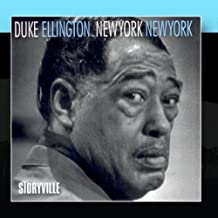
Daily Dose Of Jazz…
John Lamb was born in Vero Beach, Florida on November 29, 1933 and grew up as a child who loved playing music, specializing in the tuba. He left high school to join the United States Air Force as a musician for their military band. Stationed in Texas and then Montana, the long winters left him with ample time to practice. He replaced the regular string bassist in 1951. He When the band’s usual string bass player was unavailable for a gig in 1951, the bandmaster asked Lamb if he could play the bass; Lamb immediately said yes, and before long became the band’s new string bassist.
Lamb joined Duke Ellington’s orchestra in 1964, and toured with them for three years. Lamb was more of a fan of Miles Davis and Red Garland when he was with Ellington, In 1966 Lamb performed with Ellington and Sam Woodyard for artist Joan Miró at the Fondation Maeght in Saint-Paul-de-Vence.
A later move to St. Petersburg, Florida saw him teaching music in public schools as well as St. Petersburg College. John was awarded the Jazz Club of Sarasota’s Satchmo Award for his service to jazz. Double bassist John Lamb, who recorded with the Duke Ellington Orchestra until 1975, continues to perform.
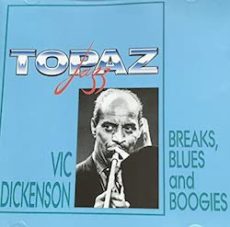
Daily Dose Of Jazz…
Joe Britton was born on November 28, 1903 in Birmingham, Alabama and following his student days under the guidance of Fess Whatley, he went to work with Bessie Smith who took him on the road from 1924 through 1926 as a member of her backing group, followed with the Fred Longshaw Orchestra and then the Bill Woods Orchestra. The next year, he jumped to Frank Bunch & the Fuzzy Wuzzies, most likely the most obscure name in the list of the groups he played for.
Settling in New York in the ’30s and immediately got into the fast-paced jazz scene working with Ellsworth Reynold’s Bostonians, Teddy Hill, the band of classic jazz drummer Kaiser Marshall, Charlie Johnson, Edgar Hayes, and the Vernon Andrade Orchestra. In the ’40s: he worked with Benny Carter from 1940-1941 and Dizzy Gillespie, while at the same time collaborating on older styles of jazz.
In the 1940s Britton worked and recorded with Jelly Roll Morton, Jay McShann, and Lucky Millinder in 1942. He would go on to be employed by Wynonie Harris showing up on a half-dozen of her R&B records, and also recorded with Sister Rosetta Tharpe.
He performed and recorded with pianist Earl Hines. The trombonist dabbled into orchestra arrangements and his work in this field is highlighted on the album Breaks, Blues and Boogies by fellow bone-man Vic Dickenson. retired from full-time professional playing in the 1950s, however, he gigged off and on into the Sixties, including a regular stint in a band led by saxophonist Wesley Fagan. Trombonist Joe Britton passed away on August 12, 1972 in New York City, New York.
More Posts: arranger,bandleader,history,instrumental,jazz,music,trombone
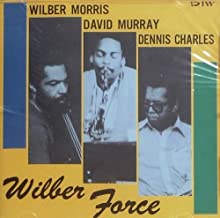
Daily Dose Of Jazz…
Wilber Morris was born on November 27, 1937 in Los Angeles, California and began playing drums as a child. Joining the Air Force in 1954, during his tour of duty of eight years switched to the bass. He would play around San Francisco, California in his off times with the likes of Pharoah Sanders and Sonny Simmons. After his discharge, he returned to Los Angeles and played with Arthur Blythe and Horace Tapscott.
Moving back to San Francisco in 1969 his jazz career didn’t really take off until he relocated to New York City nearly a decade later. By 1978 Wilber found work with violinist Billy Bang and saxophonist David Murray, the latter would become a long-standing association well into the ’90s. During the early Eighties, he formed his own trio, Wilber Force, with drummer Denis Charles and saxophonist Charles Tyler with whom he recorded.
He held various teaching positions in addition to recording and performing. He began to work outside Murray’s group and also founded the One World Ensemble. He recorded four albums as a leader and as a sideman another two dozen albums. Morris performed with such musicians as Pharoah Sanders, Sonny Simmons, Alan Silva, Joe McPhee, Horace Tapscott, Butch Morris, Arthur Blythe, Charles Gayle, William Parker, and Bob Ackerman, Charles Tyler, Dennis Charles, Roy Campbell, Avram Fefer, Alfred 23 Harth, Borah Bergman, Bobby Few, and Rashied Ali.
Double bassist and bandleader Wilber Morris, who performed mainly in the free jazz genre and was the brother of the cornetist, composer, and conductor Butch Morris, passed away on August 8, 2002 in New York City.
More Posts: bandleader,bass,history,instrumental,jazz,music


